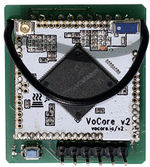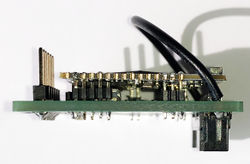Difference between revisions of "Meteobridge NANO SD"
| Line 8: | Line 8: | ||
===Local storage of data=== | ===Local storage of data=== | ||
| − | The fundamental difference to a simple NANO is that the NANO SD has 2 GB of permanent storage while the NANO just has 16 MB mostly covered by the operating system and the application programs. | + | The fundamental difference compared to a simple NANO is that the NANO SD has 2 GB of permanent storage while the NANO just has 16 MB mostly covered by the operating system and the application programs. Equipped with 2 GB the NANO SD can hold about 20 years of data. NANO SD holds data for last 72 hours in a per minute resolution and older data in a per hour resolution. Hourly data can be inspected and edited through the NANO web interface. This makes handling of logged data rather intuitive and you don't need separate tools for it. |
| + | |||
| + | nanosd-1 | ||
| + | |||
| + | |||
| + | |||
local storage of data for > 10 years | local storage of data for > 10 years | ||
Revision as of 18:38, 7 November 2018
<languages /><translate>
The NANO SD is hardware-wise a regular NANO with a microSD card inserted. The microSD card slot is hidden between the two PCBs and fully operational on all NANOs out there. That means every NANO can be upgraded to a NANO SD. As a result the NANO SD is mainly operated like a NANO, it can all do a NANO can plus a bit more. There is nothing completely new about it when you look onto the base operations. You can browse through the main specs here.
What can a NANO SD do better than a NANO?
In principle it adds some of the core Meteobridge PRO functions to the NANO. Please allow us to highlight the ones that might be of particular interest to you.
Local storage of data
The fundamental difference compared to a simple NANO is that the NANO SD has 2 GB of permanent storage while the NANO just has 16 MB mostly covered by the operating system and the application programs. Equipped with 2 GB the NANO SD can hold about 20 years of data. NANO SD holds data for last 72 hours in a per minute resolution and older data in a per hour resolution. Hourly data can be inspected and edited through the NANO web interface. This makes handling of logged data rather intuitive and you don't need separate tools for it.
nanosd-1
local storage of data for > 10 years
- allowing data exports in CSV format
- generating interactive JavaScript charts
to name the most obvious. Please get an impression how easy and powerful data exports and chart generation works by watching the videos below.
Choice of microSD Card
To avoid lots of system fails caused by worn out consumer microSD cards we restrict microSD cards that can be used in the NANO to the 1GB and 2GB industrial SLC cards from swissbit. They are world-wide available from Mouser. We decided to enforce use of these high endurance cards to avoid having tons of unnecessary support requests and not to harm the reputation of the product by that. We have been through this with the Meteohub products and the Meteobridge PRO and there is simply no reasonable way to avoid buying of high-price, high-endurance SLC storage. These are the currently supported microSD cards:
- SFSD1024N1BM1TO-I-DF-221-STD (microSD Card, S-450u, 1 GB, SLC Flash, -40°)
- SFSD2048N1BM1MT-I-ME-211-STD (microSD Card, S-450u, 2 GB, SLC Flash, -40°)
- SFSD2048N1BM1MT-E-ME-211-STD (microSD Card, S-450u, 2 GB, SLC Flash, -25°)
How to put a microSD card into the NANO?
Inserting the microSD card between the two PCBs can be easily done with the help of a simple to build one-time paper tool. Please read details here or watch the video below.
NANO SD tutorial videos
To give you an impression how easy NANO SD features can be used, we compiled a few tutorial videos. Don't expect entertainment, it is more a commented clickstream but we think that explains best how it works and how to realise use cases that might be relevant to you.
NANO SD new functions
This video shows the most prominent additional functions the NANO gets by adding a microSD card. Operation of the two new tabs "History" and "Graphs" is explained and demoed.
Generating and Uploading
This video shows how data exports and chart generation can be put on a time schedule and how to automatically upload this to your web server via FTP.
Availability
Prices and availability from resellers will follow shortly.


